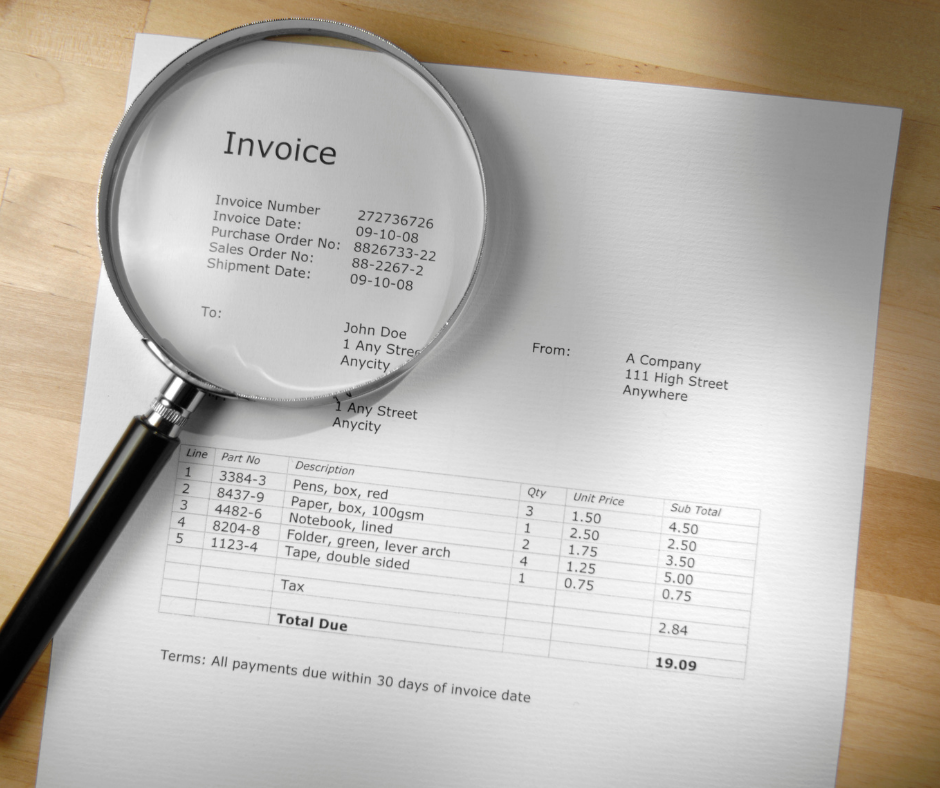Invoicing is perhaps the most important activity that your company can practice on a daily basis. Invoices aren’t just records of monetary transactions happening at your firm, but also a source of other important information, such as vendor details, date of transaction, and method of payment, among others.
Amongst the most important roles that invoicing checklist plays in a firm, the top purposes that a well-made invoice fulfills are:
- Proper invoicing helps to understand tax liabilities better and plan for tax savings where there is a window
- Proper invoicing also helps in controlling the cash flows – in and out – at your company, giving you more control over spending and expenses
- Proper invoicing helps your see which projects are costing you more resources, and they can help you plan better for resource allocation
With that said, many firms find themselves struggling to keep proper records of invoicing, and some even struggle with preparing invoices. It is of great importance to create invoices properly so that all the downstream activities can be streamlined. Right from taxation to resource allocation, invoices help aggregate important data to empower decision-making. Let’s learn a little more about invoicing checklist by covering the following topics in this blog:
- What is an Invoice?
- Different Types of Invoices for Invoicing Checklist
- Invoicing Checklist
What is an Invoice?
A commercial document that has the record of the time, amount, buyer, and seller of an item or services is called an invoice. This document also displays the method of payment, payment terms, and whether or not the items or services were sold on credit. Details of EMI, if availed, can also be seen on an invoice. Seeing how this document alone encompasses all the details pertaining to a sale or transaction, its importance cannot be undermined. Creating invoices efficiently helps to optimize other processes involved that need the data on this document.
It helps to know the types of invoices that exist, and how to write them properly. Let’s now see the different types of invoices that are created.
Different Types of Invoices
Based on which industry your business belongs to, and on the kind of items or services you deal in, the format of invoices differs. Let’s see some of the most common types of invoices that exist today.
Standard Invoice
The most common type of invoice in the invoicing checklist is the Standard invoice. Its format is flexible enough to cater to most industries; more often than not, you would be able to find templates that are customizable for your business. It consists of the basic details an invoice must carry:
- Invoice number
- Buyer and seller details
- Transaction amount and date
Credit Invoice
This kind of invoice is issued to a client or a customer in the following cases:
- A correction needs to be made to an erroneous previous invoice issued
- There is a sales return
- The client needs to be refunded some amount
The bottom figure on a credit invoice is always negative, indicating the transaction as outwards.
Debit Invoice
These invoices are similar to credit invoices, with the exception that in this case, the client owes the business additional money, instead of the other way around as with credit invoices. It may so happen that certain additions to the sales were recorded after the issuance of the first invoice – in such cases, a debit note is issued as a correction.
Mixed Invoice
Mixed invoices club the concept of credit and debit notes into one. The bottom line figure is either negative or positive, depending on the credit and debit values. Mixed invoices aren’t necessary until a situation arises where the same client needs to be billed further for one project while he owes more money to your company for another project.
Commercial Invoice
Commercial invoices are issued by a business that sells goods to be transported overseas. As such, the details to be furnished on this invoice need to account for cross-border data requirements, like customs duty. Some other details that need to be on a commercial invoice are:
- Weight of package
- Shipment quantity
- Description of items in the package
- Total value of package
- Format of packaging
Timesheet Invoice
Such an invoice is purely used by professionals who bill on a per-hour basis according to their hourly rates, such as consultancies or lawyers. A timesheet invoice consists of details pertaining to active hours employed in the project, hourly rate, total bill, overtime, and overhead expenses if incurred.
Expense Invoice
The type of invoice that an employee is supposed to furnish to his employer wherein are listed all the expenses that he incurred working on a project is called an expense invoice, or expense report. This invoice helps the employee get a reimbursement of the expenses he shouldered for a project, like air travel tickets hotel expenses, and the like.
Pro Forma Invoice
This type of invoice is a record of the estimated expenses that are to be incurred for a project before the services or items are rendered to the client. Depending on the work that was done on the project, the pro forma invoice can be modified to reflect true expenses.
Interim Invoice
This type of invoice is followed for bigger projects that span over longer periods. When the client and the professional agree to multiple invoicing during the project term, the profession uses interim invoices upon achievement of certain milestones in the project. Since the projects are long-term, interim invoices keep the cash rolling to keep things in motion.
Final Invoice
Final invoice is sent to the client on completion of a project. This document is highly detailed and consists of the following information:
- Itemized details of all services and products
- Invoice number and date
- Payment amount, methods, exceptions, etc.
- Total cost of the entire project
No other invoices are issued after the final invoice.
Past Due Invoice
As the name suggests, when a client misses the due date of the final invoice and your payment is still due, a past due invoice is issued as a reminder that your payment is still outstanding. Ideally, as soon as a due date is missed, a past due invoice should automatically be created.
Recurring Invoice
If you are catering services to a client for the same amount at fixed intervals, then a recurring invoice is what you should be using. For retainerships (such as accountancy, IT services, etc.), recurring invoices are used. It is possible to automate these invoices, as the details remain largely the same, except the date and invoice number.
E-Invoice
This document isn’t any specific type of invoice; rather any invoice that is shared with the client is termed an e-invoice. In today’s day and age, e-invoices are becoming popular because they are more efficient and quicker to work with.
Invoicing Checklist
To prepare an invoice effectively, there are certain items and data that should necessarily be included in it. Let’s see what this information is.
- Invoice Template - Based on the industry your business operates in, and on the type of billing you need to do, select an invoice template based on the different types of invoices available
- Date on the Invoice - The date on the invoice should be the day you send it to your client, not the day you create it
Invoice Number - This is the single most important information on an invoice – it helps to quickly locate the invoice, extract data from it and recognize a specific invoice among a crowd of other invoices
Customer Details - A proper invoice consists of customer/client details, such as business office address, contact information, representative information if available, order ID, and so on. You may have noticed that when you shop at retail stores, the invoice you receive carries your name and phone number
Item Description - Without the information on the kind of items/services sold, an invoice is incomplete. Ensure that the invoice describes the item, item class, SKU code, etc. when you create the invoice
Costs - A good invoice contains the total cost of an item, and the cost break-up as well that shows taxes, logistics expenses, etc. that have been levied on the package
Payment Terms - As discussed earlier, an invoice must carry the terms of payment agreed upon – whether there were any discounts provided, EMIs, payment method, etc.
Approvals - It is important to check whether or not you need to get approval from any concerned person before the invoice is issued. If yes, then get the seal of approval on it first
Sending with Attention Note - Ask the client directly whether they would like the invoice sent to them via mail or post. Make sure you also communicate an attention note that the invoice has been sent
Save a Copy - To prevent accidental alteration of the invoice, save a copy in a different location. This helps to preserve records and use the duplicate in case the original is lost
Post Due Date - Based on the terms of payment agreed to by both parties, there will be an invoice due date period. Ensure that you set a reminder when this date passes, so you can issue a post-due invoice
Accounts - Once the invoice is sent, you need to ensure that your accounting and taxation team is up to speed with its status
How can Deskera Assist You
Deskera is a cloud system that makes your business analytics and data available in real-time and across every device. This saves business time and money by making it possible to make quick decisions based on data that is updated and accurate.
An online accounting and invoicing application, Deskera Books is designed to make your life easier. This all-in-one solution allows you to track invoices, expenses, and view all your financial documents from one central location.
In addition to this, Deskera Books will make accounting faster, more efficient and real-time. This will become the basis for your sales strategy as well as business decisions. Deskera books will also ensure that your business follows the RITE framework of accounting, which will save it money.

Invoice generation, invoice reminders, and integration of tasks, inventory, tax calculations and payments due and receivable can also be brought together in one place.
Deskera is hence your go-to solution for all your business financial reports and more. It will become your guide, mentor and assistant that will help you avoid mistakes and save you money.

Conclusion
Invoicing checklists are things of understated importance. Using invoicing checklists, you can ensure that no stone is left unturned while creating and sending an invoice. Follow-ups to missed payments are also covered in invoicing checklists, making it easier to carry out related tasks.
Key Takeaways
Invoicing checklists are a way to keep a track of all the activities that invoicing involves. Right from picking a template to filling in the required details, an invoicing checklist encompasses the whole workflow of invoicing by covering the following aspects:
- Checking invoice numbers, date, and payment terms on an invoice
- Checking contact details of the client on the invoice
- Selecting the right template, gathering the right information to be filled in
- Creating follow-up milestones and reminders
An invoicing checklist helps to close the open ends that may occur while creating an invoice.
Related Articles












